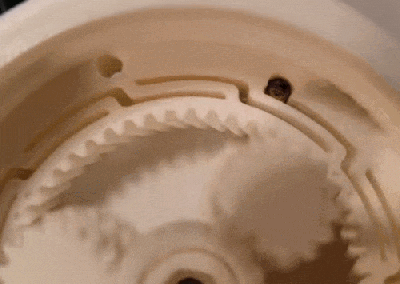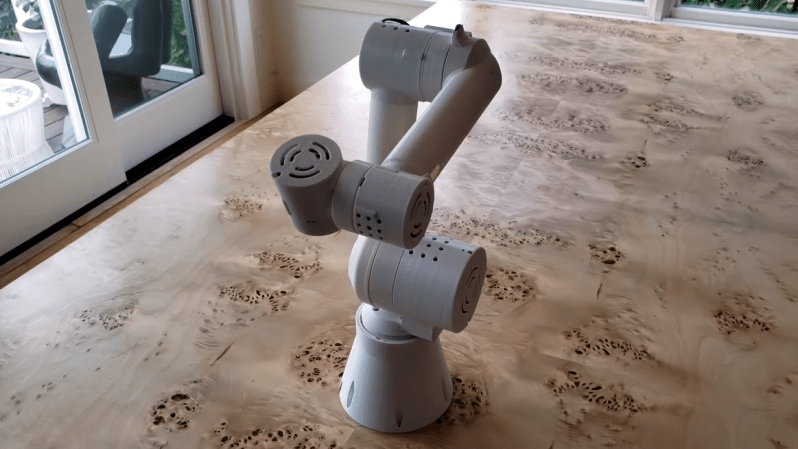[John Lauer] has been hard at work re-thinking robot arms. His project to create modular, open source actuators that can be connected to one another to form an arm is inspiring, and boasts an impressively low parts cost as well. The actuators are each self-contained, with an ESP32 and a design that takes advantage of the form factors of inexpensive modules and parts from vendors like Aliexpress.

Each module has 3D printed gears (with an anti-backlash flex spline), an RGB LED for feedback, integrated homing, active cooling, a slip ring made from copper tape, and a touch sensor dial on the back for jogging and training input. The result is a low backlash, low cost actuator that keeps external wiring to an absolute minimum.
Originally inspired by a design named WE-R2.4, [John] has added his own twist in numerous ways, which are best summarized in the video embedded below. That video is number three in a series, and covers the most interesting developments and design changes while giving an excellent overview of the parts and operation (the video for part one is a basic overview and part two shows the prototyping process, during which [John] 3D printed the structural parts and gears and mills out a custom PCB.)
Is your interest piqued? If so, head over to the GitHub repository for all the details, including Fusion 360 models, PCB design files, and a complete bill of materials with online sources. While not all robotic actuators require motors or gears, one thing that is undeniable is that the availability of 3D printing, PCB fabrication, and access to electronic components has been a tremendous boon to projects like this.
















Impressive concept. Encoders for closed loop control would be a nice touch. I am really looking forward to see how this will evolve over time.
Check out this thread for the new work being done on closed loop control. https://forum.makerforums.info/t/adding-a-3d-printed-optical-encoder-as-well/78655/8
Wow, this looks really exciting, I wonder if there are any plans to upgrade the large drives at the base? Also an idea of the printer settings might be useful to some.
Wow, just realized you guys Hackaday’ed my project! Awesome to see the community getting intrigued.